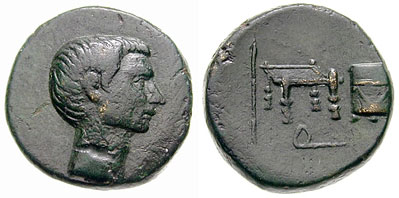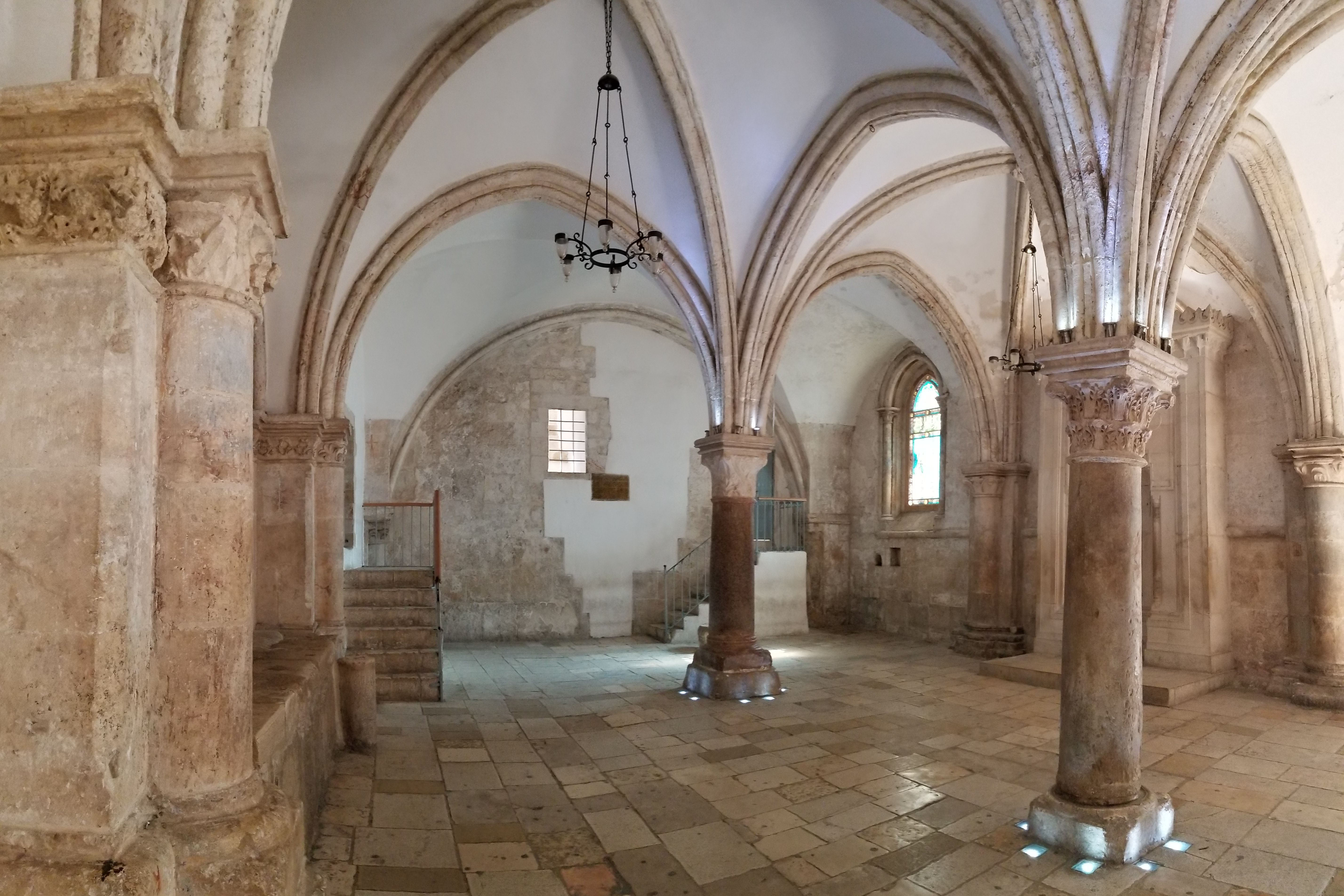|
Rationalis
A ''rationalis'' was a high-ranking fiscal officer in the Roman Empire. Until replaced by the ''comes sacrarum largitionum'' by Emperor Constantine in the early 4th century, the ''rationalis summarum'' – comparable to a modern-day finance minister – was one of two state officials who had authority over the imperial treasury, the other one being the ''rationalis rei privatae'' (manager of imperial estates and city properties). Examples for tasks that were performed by a ''rationalis'' are "the collection of all normal taxes and duties, the control of currency and the administration of mines and mints". Each province also had various classes of ''rationales'', and Emperor Diocletian's administrative reforms had mirrored the dual structure on the diocesis–level, instituting the local positions ''rationalis summarum'' and ''magister rei privatae'' above the '' procuratores''. The former continued to exist after the reforms, one example are the ''comes et rationalis summarum ... [...More Info...] [...Related Items...] OR: [Wikipedia] [Google] [Baidu] |
Comes
''Comes'' (plural ''comites''), translated as count, was a Roman title, generally linked to a comitatus or comital office. The word ''comes'' originally meant "companion" or "follower", deriving from "''com-''" ("with") and "''ire''" ("go"). The special lasting meaning derives from the position of a follower within a ''comitatus'', which was a retinue, or group of followers, such as those of magnates. In some instances these were sufficiently large and/or formal to justify specific denomination, such as a "''cohors amicorum''". The word ''comes'' is the origin of the much later terms for counts within the medieval nobility, and counties as their territorial jurisdictions. Ancient Roman religion ''Comes'' was a common epithet or title that was added to the name of a hero or god in order to denote relation with another god. The coinage of Constantine I (emperor), Roman Emperor Constantine I declared him "''comes''" to Sol Invictus ("Unconquered Sun") ''qua'' god. Imperial Ro ... [...More Info...] [...Related Items...] OR: [Wikipedia] [Google] [Baidu] |
Rationibus
The ''a rationibus'' was the secretary of finance in the Roman Empire and in charge of the imperial treasury, the ''fiscus''. His responsibilities involved monitoring the state's revenues and expenditures and maintaining the accounts of the ''fiscus'', giving the ''a rationibus'' considerable influence. The role of the ''a rationibus'' was originally created by Augustus, who needed accurate and comprehensive accounts of the state's finances in order to exercise budgetary control, and was thus given to members of his household, probably freedmen. This role was then institutionalized in the position of the ''a rationibus'', who was paid a salary by the ''aerarium'' and given an office in the Palatine bureaus, under Tiberius. Roman patrician families such as the Junii Silani may also have designated their accountants as "a rationibus", although this custom fell out of practice when the imperial office of the ''a rationibus'' became institutionalized and had vanished at the latest under ... [...More Info...] [...Related Items...] OR: [Wikipedia] [Google] [Baidu] |
Congiarium
Of Ancient Roman containers, a congiarium, or congiary (Latin, from '' congius''), was a vessel containing one congius, a measure of volume equal to six sextarii. In the early times of the Roman Republic, the congius was the usual measure of oil or wine which was, on certain occasions, distributed among the people; and thus congiarium became a name for liberal donations to the people, in general, whether consisting of oil, wine, grain, or money, or other things, while donations made to the soldiers were called '' donativa'', though they were sometimes also termed ''congiaria''. Congiarium was, moreover, occasionally used simply to designate a present or a pension given by a person of high rank, or a prince, to his friends; and Fabius Maximus called the presents which Augustus made to his friends, on account of their smallness, ''heminaria'', instead of congiaria, because hemina was only the twelfth part of a congius. Tiberius gave a congiarium of 72½ denarii (300 sesterces) to ... [...More Info...] [...Related Items...] OR: [Wikipedia] [Google] [Baidu] |
Fiscus
''Fiscus'' (Latin for "basket") was the treasury of the Roman Empire. It was initially the personal wealth of the emperors, funded by taxation on the imperial provinces, assumption of estates and other privileges. By the third century it was understood as a state fund rather than a personal one, albeit under the emperor's control. It is the origin of the English term "fiscal." Origins Augustus divided Rome's territory between senatorial provinces, whose tributes ended up in the '' aerarium'' (the already existing state's chest), and imperial provinces, whose incomes ended up into the ''fiscus'', the emperor's chest. Upon the latter chest fell the most burdensome costs, namely the ones for army and fleet, bureaucracy and grants to urban plebs (distribution of wheat or moneys). The imperial provinces, under Augustus' reform, were the provinces ''non pacatae'' (i.e., the border provinces) which Augustus had advocated under his direct administration. Those provinces, that later ... [...More Info...] [...Related Items...] OR: [Wikipedia] [Google] [Baidu] |
Byzantine Empire
The Byzantine Empire, also known as the Eastern Roman Empire, was the continuation of the Roman Empire centred on Constantinople during late antiquity and the Middle Ages. Having survived History of the Roman Empire, the events that caused the fall of the Western Roman Empire in the 5th centuryAD, it endured until the fall of Constantinople to the Ottoman Empire in 1453. The term 'Byzantine Empire' was coined only after its demise; its citizens used the term 'Roman Empire' and called themselves 'Romans'. During the early centuries of the Roman Empire, the western provinces were Romanization (cultural), Latinised, but the eastern parts kept their Hellenistic culture. Constantine the Great, Constantine I () legalised Christianity and moved the capital to Constantinople. Theodosius I, Theodosius I () made Christianity the state religion and Greek gradually replaced Latin for official use. The empire adopted a defensive strategy and, throughout its remaining history, expe ... [...More Info...] [...Related Items...] OR: [Wikipedia] [Google] [Baidu] |
Logothete
Logothete (, ''logothétēs'', pl. λογοθέται, ''logothétai''; Med. , pl. ''logothetae''; ; ; ; , ''logotet'') was an administrative title originating in the eastern Roman Empire. In the middle and late Byzantine Empire, it rose to become a senior administrative title, equivalent to a minister or secretary of state. The title spread to other states influenced by Byzantine culture, such as Bulgaria, Sicily, Serbia, and the Danubian Principalities. Byzantine Empire Origin and development In Greek, ''logothetēs'' means "one who accounts, calculates or ratiocinates", literally "one who sets the word". The exact origin of the title is unclear; it is found in papyri and works of the Church Fathers denoting a variety of junior officials, mostly charged with fiscal duties.. The ancestors of the middle Byzantine logothetes were the fiscal officials known as '' rationales'' during Late Antiquity. The office dates back to at least the time of Emperor Septimius Severus (), where ... [...More Info...] [...Related Items...] OR: [Wikipedia] [Google] [Baidu] |
Alexandria
Alexandria ( ; ) is the List of cities and towns in Egypt#Largest cities, second largest city in Egypt and the List of coastal settlements of the Mediterranean Sea, largest city on the Mediterranean coast. It lies at the western edge of the Nile Delta, Nile River delta. Founded in 331 BC by Alexander the Great, Alexandria grew rapidly and became a major centre of Hellenic civilisation, eventually replacing Memphis, Egypt, Memphis, in present-day Greater Cairo, as Egypt's capital. Called the "Bride of the Mediterranean" and "Pearl of the Mediterranean Coast" internationally, Alexandria is a popular tourist destination and an important industrial centre due to its natural gas and petroleum, oil pipeline transport, pipelines from Suez. The city extends about along the northern coast of Egypt and is the largest city on the Mediterranean, the List of cities and towns in Egypt#Largest cities, second-largest in Egypt (after Cairo), the List of largest cities in the Arab world, fourth- ... [...More Info...] [...Related Items...] OR: [Wikipedia] [Google] [Baidu] |
Church History (Eusebius)
The ''Ecclesiastical History'' (, ; ), also known as ''The History of the Church'' and ''The Church History'', is a 4th-century chronological account of the development of Early Christianity from the 1st century to the 4th century, composed by Eusebius, the bishop of Caesarea. It was written in Koine Greek and survives also in Latin, Syriac, and Armenian manuscripts. Contents The result was the first full-length narrative of the world history written from a Christian point of view. summarizes Eusebius's influence on historiography. According to Paul Maier, Herodotus was the father of history and Eusebius of Caesarea is the father of ecclesiastical history. In the early 5th century, two advocates in Constantinople, Socrates Scholasticus and Sozomen, and a bishop, Theodoret of Cyrrhus, Syria, wrote continuations of Eusebius's account, establishing the convention of continuators that would determine to a great extent the way history was written for the next thousand years. ... [...More Info...] [...Related Items...] OR: [Wikipedia] [Google] [Baidu] |
Phileas And Philoromus
Saints Phileas and Philoromus (died ) were two Egyptian martyrs under the Emperor Diocletian. Phileas was Bishop of Thmuis and Philoromus was a senior imperial officer. Jerome's account From ''De viris illustribus'' (4th century): Monks of Ramsgate account The monks of St Augustine's Abbey, Ramsgate wrote in their ''Book of Saints'' (1921), Butler's account The hagiographer Alban Butler (1710–1773) wrote in his ''Lives of the Fathers, Martyrs, and Other Principal Saints'', Lardner's account Nathaniel Lardner Nathaniel Lardner (6 June 1684 – 24 July 1768) was an English Presbyterian minister and theologian. Life Lardner was born in Hawkhurst, Kent in 1684. He was the elder son of Richard Lardner (1653–1740), an independent minister, and of ... (1684–1768) in his ''Credibility of the Gospel History'' wrote, Notes Sources * * * * {{DEFAULTSORT: Saints from Roman Egypt 306 deaths ... [...More Info...] [...Related Items...] OR: [Wikipedia] [Google] [Baidu] |
Christianity
Christianity is an Abrahamic monotheistic religion, which states that Jesus in Christianity, Jesus is the Son of God (Christianity), Son of God and Resurrection of Jesus, rose from the dead after his Crucifixion of Jesus, crucifixion, whose coming as the Messiah#Christianity, messiah (Christ (title), Christ) was Old Testament messianic prophecies quoted in the New Testament, prophesied in the Old Testament and chronicled in the New Testament. It is the Major religious groups, world's largest and most widespread religion with over 2.3 billion followers, comprising around 28.8% of the world population. Its adherents, known as Christians, are estimated to make up a majority of the population in Christianity by country, 157 countries and territories. Christianity remains Christian culture, culturally diverse in its Western Christianity, Western and Eastern Christianity, Eastern branches, and doctrinally diverse concerning Justification (theology), justification and the natur ... [...More Info...] [...Related Items...] OR: [Wikipedia] [Google] [Baidu] |
Christian Martyrs
In Christianity, a martyr is a person who was killed for their testimony for Jesus or faith in Jesus. In the years of the early church, stories depict this often occurring through death by sawing, stoning, crucifixion, burning at the stake, or other forms of torture and capital punishment. The word ''martyr'' comes from the Koine word μάρτυς, ''mártys'', which means "witness" or "testimony". At first, the term applied to the Apostles. Once Christians started to undergo persecution, the term came to be applied to those who suffered hardships for their faith. Finally, it was restricted to those who had been killed for their faith. The early Christian period before Constantine I was the "Age of Martyrs". "Early Christians venerated martyrs as powerful intercessors, and their utterances were treasured as inspired by the Holy Spirit." In western Christian art, martyrs are often shown holding a palm frond as an attribute, representing the victory of spirit over flesh, and ... [...More Info...] [...Related Items...] OR: [Wikipedia] [Google] [Baidu] |




